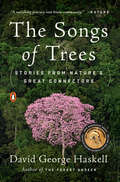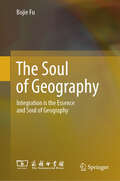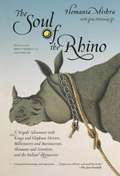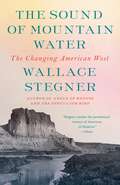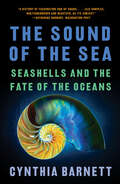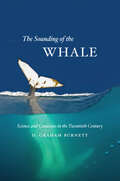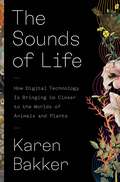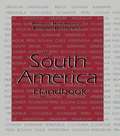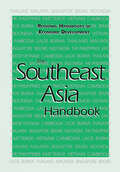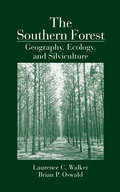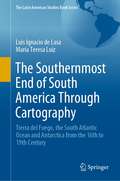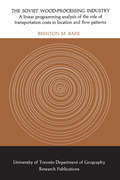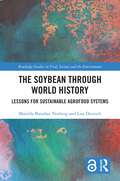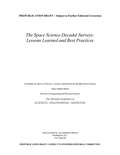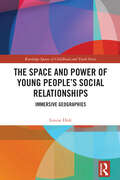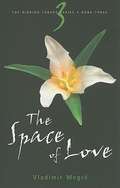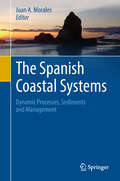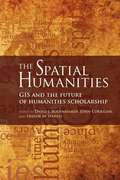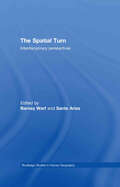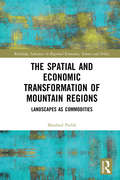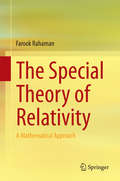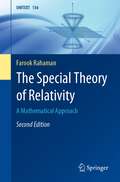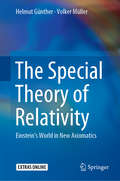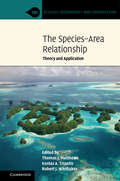- Table View
- List View
The Songs of Trees: Stories from Nature's Great Connectors
by David George HaskellThe author of the Pulitzer Prize finalist The Forest Unseen visits with nature’s most magnificent networkers — trees “Here is a book to nourish the spirit. The Songs of Trees is a powerful argument against the ways in which humankind has severed the very biological networks that give us our place in the world. Listen as David Haskell takes his stethoscope to the heart of nature - and discover the poetry and music contained within.” -- Peter Wohlleben, author of The Hidden Life of TreesDavid Haskell’s award-winning The Forest Unseen won acclaim for eloquent writing and deep engagement with the natural world. Now, Haskell brings his powers of observation to the biological networks that surround all species, including humans. Haskell repeatedly visits a dozen trees around the world, exploring the trees’ connections with webs of fungi, bacterial communities, cooperative and destructive animals, and other plants. An Amazonian ceibo tree reveals the rich ecological turmoil of the tropical forest, along with threats from expanding oil fields. Thousands of miles away, the roots of a balsam fir in Canada survive in poor soil only with the help of fungal partners. These links are nearly two billion years old: the fir’s roots cling to rocks containing fossils of the first networked cells. By unearthing charcoal left by Ice Age humans and petrified redwoods in the Rocky Mountains, Haskell shows how the Earth’s climate has emerged from exchanges among trees, soil communities, and the atmosphere. Now humans have transformed these networks, powering our societies with wood, tending some forests, but destroying others. Haskell also attends to trees in places where humans seem to have subdued “nature” – a pear tree on a Manhattan sidewalk, an olive tree in Jerusalem, a Japanese bonsai– demonstrating that wildness permeates every location. Every living being is not only sustained by biological connections, but is made from these relationships. Haskell shows that this networked view of life enriches our understanding of biology, human nature, and ethics. When we listen to trees, nature’s great connectors, we learn how to inhabit the relationships that give life its source, substance, and beauty.
The Sons of Remus: Identity in Roman Gaul and Spain
by Andrew C. JohnstonHistories of Rome emphasize the ways the empire assimilated conquered societies, bringing civilization to “barbarians.” Yet these interpretations leave us with an incomplete understanding of the diverse cultures that flourished in the provinces. Andrew C. Johnston recaptures the identities, memories, and discourses of these variegated societies.
The Soul of Geography: Integration is the Essence and Soul of Geography
by Bojie FuThis book compiles a series of essays systematically organized to present the author&’s decades of reflection on geographical research and teaching. Geography is a broad and profound discipline that spans the natural sciences, social sciences, and technical sciences, with the goal of &“exploring natural laws and revealing the humanistic essence.&” Theories and methodologies in geography offer unparalleled advantages in addressing the challenges humanity faces regarding natural resources management, environmental sustainability, and socioeconomic development. This book highlights the spirit and allure of geography from four perspectives: &“Integrated Essence,&” &“Space and Process,&” &“Systems Thinking,&” and &“Social Application&”, offering a glimpse into the insights and inner journey of a geographer.
The Soul of a Rhino: A Nepali Adventure with Kings and Elephant Drivers, Billionaires and Bureaucrats, Shamans and Scientists and the Indian Rhinoceros
by Hemanta Mishra Jim OttawayThis is a story of a Nepalese who has spent his entire life devoted to the conservation of an endangered species.
The Sound of Mountain Water
by Wallace StegnerA book of timeless importance about the American West by a National Book Award and Pulitzer Prize-winning author. Wallace Stegner's essays collected in this volume encompass memoir, nature conservation, history, geography, and literature. Stegner's writing about the West, especially in the wake of the post-World War II boom when much of the Rocky Mountan West--Montana, Wyoming, Colorado, Utah, Idaho, and Nevada--was thrust into the modern age retain their sense of immediacy.Writtten over a period of thirty-five years by a writer and thinker who will always hold a unique position in modern American letters, The Sound of Mountain Water is a modern American classic.
The Sound of the Sea: Seashells And The Fate Of The Oceans
by Cynthia BarnettA compelling history of seashells and the animals that make them, revealing what they have to tell us about nature, our changing oceans, and ourselves. Seashells have been the most coveted and collected of nature’s creations since the dawn of humanity. They were money before coins, jewelry before gems, art before canvas. In The Sound of the Sea, acclaimed environmental author Cynthia Barnett blends cultural history and science to trace our long love affair with seashells and the hidden lives of the mollusks that make them. Spiraling out from the great cities of shell that once rose in North America to the warming waters of the Maldives and the slave castles of Ghana, Barnett has created an unforgettable account of the world’s most iconic seashells. She begins with their childhood wonder, unwinds surprising histories like the origin of Shell Oil as a family business importing exotic shells, and charts what shells and the soft animals that build them are telling scientists about our warming, acidifying seas. From the eerie calls of early shell trumpets to the evolutionary miracle of spines and spires and the modern science of carbon capture inspired by shell, Barnett circles to her central point of listening to nature’s wisdom—and acting on what seashells have to say about taking care of each other and our world.
The Sounding of the Whale: Science and Cetaceans in the Twentieth Century
by D. Graham Burnett&“This wonderful book documents the interplays among science, conservation and politics in the evolving career of the whale over the last century.&” —William Perrin, Senior Scientist for Marine Mammals at the Southwest Fisheries Science Center, NOAA Fisheries Service From biblical times, whales have breached in the human imagination as looming figures of terror, power, confusion, and mystery. In the twentieth century, however, our understanding of and relationship to these superlatives of creation underwent some astonishing changes, and with The Sounding of the Whale, D. Graham Burnett tells the fascinating story of the transformation of cetaceans from grotesque monsters, useful only as wallowing kegs of fat and fertilizer, to playful friends of humanity, bellwethers of environmental devastation, and, finally, totems of the counterculture in the Age of Aquarius. When Burnett opens his story, ignorance reigns: even Nature was misclassifying whales at the turn of the century, and the only biological study of the species was happening in gruesome Arctic slaughterhouses. But in the aftermath of World War I, an international effort to bring rational regulations to the whaling industry led to an explosion of global research—and regulations that, while well-meaning, were quashed, or widely flouted, by whaling nations, the first shot in a battle that continues to this day. The book closes with a look at the remarkable shift in public attitudes toward whales that began in the 1960s, as environmental concerns and new discoveries about whale behavior combined to make whales an object of sentimental concern and public adulation. A sweeping history, grounded in nearly a decade of research, The Sounding of the Whale tells a remarkable story of how science, politics, and simple human wonder intertwined to transform the way we see these behemoths from below.
The Sounds of Life: How Digital Technology Is Bringing Us Closer to the Worlds of Animals and Plants
by Karen BakkerAn amazing journey into the hidden realm of nature&’s soundsThe natural world teems with remarkable conversations, many beyond human hearing range. Scientists are using groundbreaking digital technologies to uncover these astonishing sounds, revealing vibrant communication among our fellow creatures across the Tree of Life.At once meditative and scientific, The Sounds of Life shares fascinating and surprising stories of nonhuman sound, interweaving insights from technological innovation and traditional knowledge. We meet scientists using sound to protect and regenerate endangered species from the Great Barrier Reef to the Arctic and the Amazon. We discover the shocking impacts of noise pollution on both animals and plants. We learn how artificial intelligence can decode nonhuman sounds, and meet the researchers building dictionaries in East African Elephant and Sperm Whalish. At the frontiers of innovation, we explore digitally mediated dialogues with bats and honeybees. Technology often distracts us from nature, but what if it could reconnect us instead?The Sounds of Life offers hope for environmental conservation and affirms humanity&’s relationship with nature in the digital age. After learning about the unsuspected wonders of nature&’s sounds, we will never see walks outdoors in the same way again.
The South America Handbook (Regional Handbooks of Economic Development)
by Patrick Heenan Monique LamontagneFirst Published in 2002. Routledge is an imprint of Taylor & Francis, an informa company.
The Southeast Asia Handbook (Regional Handbooks of Economic Development #Vol. 3)
by Greg Bankoff Michael Haas Patrick Heenan Monique LamontagneThe Regional Handbooks of Economic Development series provides accessible overviews of countries within their larger domestic and international contexts, focusing on the relations among regions as they meet the challenges of the twenty first century.The series allows the non-specialist student to explore a wide range of complex factors-social and political as well as economic-that affect the growth of developing regions in Asia, Europe, and South America. Each Handbook provides an overview chapter discussing the region's economic conditions within an historical and political context, as well as 20 or more chapter-length essays written by recognized experts, which analyze the key issues affecting a region's economy: its population, natural resources, foreign trade, labor problems, and economic inequalities, and other vital factors.In addition, the volumes offer useful support materials, including a series of appendices that include a detailed chronology of events in the region, a glossary of terms, biographical entries on key personalities, an annotated bibliography of further reading, and a comprehensive analytical index.
The Southern Forest: Geography, Ecology, and Silviculture
by Laurence C. Walker Brian P. OswaldThe Southern Forest: Geography, Ecology, and Silviculture examines the forests of the South, providing a comprehensive description of the region from which most of the nation's wood for housing and paper will be grown and harvested in the future. It gives special attention the four factors of site - edaphic, biotic, climatic, and physiographic. It also includes over 200 photographs, an extensive listing of literature citations, and appendixes of tree, insect, and disease agents. With files of field notes and photographs, it takes the reader along to grasp the South's rich forests. Land managers will need no other reference to the soils, biotic components, climate or physiology of the region.
The Southernmost End of South America Through Cartography: Tierra del Fuego, the South Atlantic Ocean and Antarctica from the 16th to 19th Century (The Latin American Studies Book Series)
by Luis Ignacio de Lasa María Teresa LuizThis volume describes the construction of the territorial identity of the southern end of South America and analyzes the cartographic territorialization of Patagonia, Tierra del Fuego and the “Terra Australis” continent. Different spatial representations and territorial nature coexisted in this process as a result of the spatial interpretation and value modes as well as the projects and strategies of various actors. The book discusses the formal and symbolic incorporation to the Spanish dominion and its inclusion in the imperial design built over a new image of the world. Examining Jesuit cartography it considers both the indigenous territoriality and the dynamics of relations between natural and social components in the continental hinterland. The process of cartographic differentiation for this southern Atlantic region is analyzed in the framework of early Antarctic exploration and competing use of navigation routes and maritime resources. The book emphasizes the role geopolitical and economic interests play in these developments. The formation of territorialities of various origins has particular contents and logic, which are built upon imaginary subordination to political and economic interests. Cartographic language in the 19th century, associated with political and commercial motivations and the (British) imperial ideology, stimulated the territorial expansion. The book argues why in the late 1800's this was an important factor in the integration process of the southern indigenous territories and the national territoriality.
The Soviet Wood-Processing Industry: A Linear Programming Analysis of the Role of Transportation Costs in Location and Flow Patterns
by Brenton M. BarrSystematic study of the geography distribution of the wood-processing industry has received recent Soviet attention, yet the results have been disappointing. Soviet work has been descriptive and lacking in critical analysis of the location problem. In particular, there has been little, if any, attempt to assess the geographic distribution of the industry within the general context of location theory and to evaluate the role played by individual location factors. This monograph is a case study in the application of linear programming techniques to the analysis of transportation patterns within the wood-processing industry. It will add to North American studies not only a knowledge of the location of wood-processing industries but also a better understanding of the factors which have influenced the location of wood-processing in the Soviet Union.(University of Toronto Department of Geography Research Publications No. 4).
The Soybean Through World History: Lessons for Sustainable Agrofood Systems (Routledge Studies in Food, Society and the Environment)
by Matilda Baraibar Norberg Lisa DeutschThis book examines the changing roles and functions of the soybean throughout world history and discusses how this reflects the complex processes of agrofood globalization. The book uses a historical lens to analyze the processes and features that brought us to the current global configuration of the soybean commodity chain. From its origins as a peasant food in ancient China, today the protein-rich soybean is by far the most cultivated biotech crop on Earth; used to make a huge variety of food and industrial products, including animal feed, tofu, cooking oil, soy sauce, biodiesel and soap. While there is a burgeoning amount of literature on how the contemporary global soy web affects large tracts of our planet’s social-ecological systems, little attention has been given to the questions of how we got here and what alternative roles the soybean has played in the past. This book fills this gap and demonstrates that it is impossible to properly comprehend the contemporary global soybean chain, or the wider agrofood system of which it is a part, without looking at both their long and short historical development. However, a history of the soybean and its changing roles within equally changing agrofood systems is inexorably a history about globalization. Not only does this book map out where soybeans are produced, but also who governs, wields power and accumulates capital in the entire commodity chain from inputs in production to consumption, as well as identifying the institutional context the global commodity chain operates within. The book concludes with a discussion of the main challenges and contradictions of the current soy regime that could trigger its rupture and end. This book is essential reading for students, practitioners and scholars interested in agriculture and food systems, global commodity chains, globalization, environmental history, economic history and social-ecological systems.
The Space Science Decadal Surveys: Lessons Learned and Best Practices
by Committee on Survey of Surveys: Lessons Learned from the Decadal Survey ProcessThe National Research Council has conducted 11 decadal surveys in the Earth and space sciences since 1964 and released the latest four surveys in the past 8 years. The decadal surveys are notable in their ability to sample thoroughly the research interest, aspirations, and needs of a scientific community. Through a rigorous process, a primary survey committee and thematic panels of community members construct a prioritized program of science goals and objectives and define an executable strategy for achieving them. These reports play a critical role in defining the nation's agenda in that science area for the following 10 years, and often beyond. "The Space Science Decadal Surveys" considers the lessons learned from previous surveys and presents options for possible changes and improvements to the process, including the statement of task, advanced preparation, organization, and execution. This report discusses valuable aspects of decadal surveys that could taken further, as well as some challenges future surveys are likely to face in searching for the richest areas of scientific endeavor, seeking community consensus of where to go next, and planning how to get there. "The Space Science Decadal Surveys" describes aspects in the decadal survey prioritization process, including balance in the science program and across the discipline; balance between the needs of current researchers and the development of the future workforce; and balance in mission scale - smaller, competed programs versus large strategic missions.
The Space and Power of Young People's Social Relationships: Immersive Geographies (Routledge Spaces of Childhood and Youth Series)
by Louise HoltThe book examines the power of young people’s social relationships in schools to transform, or more often, to continue, differences that pervade societies: mind-body-emotional diff erences or Special Educational Needs and Disability, gender, poverty, race/ethnicity, sexuality and their intersections. The book details extensive qualitative research with young people, foregrounding their accounts.In challenging educators and others to engage with young people’s own agencies and to make space for their socialities, the concepts of embodied social and emotional capital and young people as contextual bodies/subjectivities/agencies are developed, emphasising both young people’s agencies and how these are socio-spatially situated, constrained and enabled. The book is most concerned with how and when young people challenge and change enduring differences. The concept of ‘immersive geographies’ outlines the potential of change inherent in the repeated coming together of the same people in space, doing similar things that are, however, always provisional and always with the potential to be done diff erently. Examples of when diff erence is transformed are presented.The book marks a major interdisciplinary contribution to geographies and social studies of children, youth and education, child development, social work, social policy and education studies. Furthermore, it is of appeal to anyone interested in young people, social reproduction and sociality: from educators, policy makers, youth workers and social workers to parents.
The Space of Love (The Ringing Cedars Series #3)
by Vladimir Megré John Woodsworth Leonid SharashkinNothing you have read in Books 1 and 2 has prepared you for Book 3--The Space of Love.
The Spanish Coastal Systems: Dynamic Processes, Sediments and Management (Springer Geology)
by Juan A. MoralesThis monograph presents the state of art of the geologic knowledge about the Spanish coast obtained through scientific research in the last 30 years.From a general point of view, coasts are the most quickly changing systems of the Earth. This is critical, since many human resources, such as the main part of economic and social activities, are located in the coastal areas. Especially in the case of Spain these coasts include cities, wide industrial areas (including harbor complexes), important ecologic systems, and our main economic resource: tourism. Understanding the dynamic functioning of each element of this coast is vital for correct future coastal management, so as to solve problems derived from bad plans developed in the last decades of the twentieth century.This is a valuable text for advanced graduate students and coastal researchers, which connects the specific dynamic functioning of the main Spanish coastal environments and their relationships with human activities.
The Spatial Humanities
by John Corrigan David J. Bodenhamer Trevor M. HarrisGeographic information systems (GIS) have spurred a renewed interest in the influence of geographical space on human behavior and cultural development. Ideally GIS enables humanities scholars to discover relationships of memory, artifact, and experience that exist in a particular place and across time. Although successfully used by other disciplines, efforts by humanists to apply GIS and the spatial analytic method in their studies have been limited and halting. The Spatial Humanities aims to re-orient--and perhaps revolutionize--humanities scholarship by critically engaging the technology and specifically directing it to the subject matter of the humanities. To this end, the contributors explore the potential of spatial methods such as text-based geographical analysis, multimedia GIS, animated maps, deep contingency, deep mapping, and the geo-spatial semantic web.
The Spatial Turn: Interdisciplinary Perspectives (Routledge Studies in Human Geography)
by Barney Warf Santa AriasAcross the disciplines, the study of space has undergone a profound and sustained transformation. Space, place, mapping, and geographical imaginations have become commonplace topics in a variety of analytical fields in part because globalization has accentuated the significance of location. While this transformation has led to a renaissance in human geography, it also has manifested itself in the humanities and other social sciences. The purpose of this book is not to announce that space is significant, which by now is well known, but to explore how space is analyzed by a variety of disciplines, to compare and contrast these approaches, identify commonalities, and explore how and why differences appear. The volume includes works by 13 scholars from a variety of geographical regions and disciplines. The chapters combine up-to-date literature reviews concerning the role of space in each discipline and several offer original empirical analyses. Some chapters are concerned with Geography while others explore the role of space in contemporary Anthropology, Sociology, Religion, Political Science, Film, and Cultural Studies. The introduction surveys the development of the spatial turn across the fields under consideration. Despite frequent reference to the spatial turn, this is the first volume to explicitly address how theory and practice concerning space, is used in a variety of fields from diverse conceptual perspectives. This book will appeal to everyone conducting conceptual and theoretical research on space, not simply in Geography, but in related fields as well.
The Spatial and Economic Transformation of Mountain Regions: Landscapes as Commodities (Routledge Advances in Regional Economics, Science and Policy)
by Manfred PerlikMountain regions are subject to a unique set of economic pressures: they act as collective enterprises which have to valorize rare resources, such as spectacular landscapes. While primarily rural in nature, they often border large cities, and the development of industries such as hydroelectric power and the rapid development of tourism can bring about sweeping socio-economic change and vast demographic alterations. The Spatial and Economic Transformation of Mountain Regions describes the socio-economic changes and spatial impacts of the last four decades, with the transformation of mountain areas held up as an example. Much of the real-world context draws on the Alps, spanning as they do the significant economies of France, Italy, Germany, Switzerland, and Austria. Chapters address academic discourse on regional development in these mountain areas and suggest alternative approaches to the liberal-productivist societal model. This book will be essential reading for professionals, institutions, and NGOs searching for counter-models to the existing marketing approaches for peripheral areas. It will also be of interest to students of regional development, economic geography, environmental studies, and industrial economics.
The Special Theory of Relativity
by Farook RahamanThe book expounds the major topics in the special theory of relativity. It provides a detailed examination of the mathematical foundation of the special theory of relativity, relativistic mass, relativistic mechanics and relativistic electrodynamics. As well as covariant formulation of relativistic mechanics and electrodynamics, the book discusses the relativistic effect on photons. Using a mathematical approach, the text offers graduate students a clear, concise view of the special theory of relativity. Organized into 14 chapters and two appendices, the content is presented in a logical order, and every topic has been dealt with in a simple and lucid manner. To aid understanding of the subject, the book provides numerous relevant worked examples in every chapter. The book's mathematical approach helps students in their independent study and motivates them to research the topic further.
The Special Theory of Relativity: A Mathematical Approach (UNITEXT #136)
by Farook RahamanThis textbook expounds the major topics in the special theory of relativity. It provides a detailed examination of the mathematical foundation of the special theory of relativity, relativistic mass, relativistic mechanics, and relativistic electrodynamics. As well as covariant formulation of relativistic mechanics and electrodynamics, the text discusses the relativistic effect on photons. A new chapter on electromagnetic waves as well as several new problems and examples have been included in the second edition of the book. Using the mathematical approach, the text offers graduate students a clear, concise view of the special theory of relativity. Organized into 15 chapters and two appendices, the content is presented in a logical order, and every topic has been dealt with in a simple and lucid manner. To aid understanding of the subject, the text provides numerous relevant worked-out examples in every chapter. The mathematical approach of the text helps students in their independent study and motivates them to research the topic further.
The Special Theory of Relativity: Einstein’s World in New Axiomatics
by Helmut Günther Volker MüllerThis book discusses in detail the special theory of relativity without including all the instruments of theoretical physics, enabling readers who are not budding theoretical physicists to develop competence in the field. An arbitrary but fixed inertial system is chosen, where the known velocity of light is measured. With respect to this system a moving clock loses time and a moving length contracts. The book then presents a definition of simultaneity for the other inertial frames without using the velocity of light. To do so it employs the known reciprocity principle, which in this context serves to provide a definition of simultaneity in the other inertial frames. As a consequence, the Lorentz transformation is deduced and the universal constancy of light is established. With the help of a lattice model of the special theory of relativity the book provides a deeper understanding of the relativistic effects. Further, it discusses the key STR experiments and formulates and solves 54 problems in detail.
